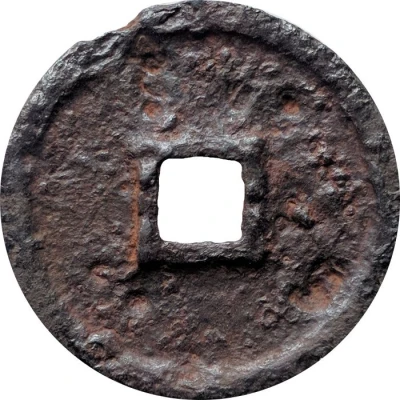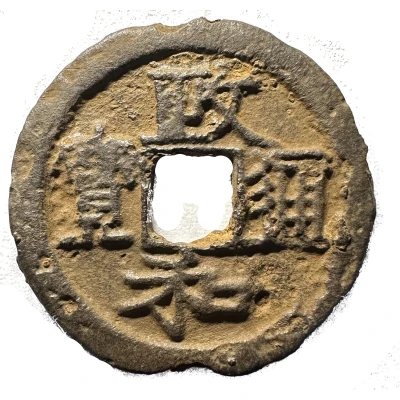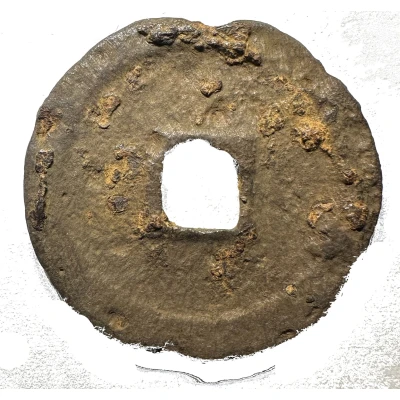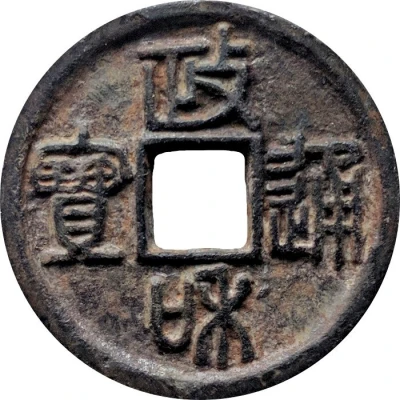
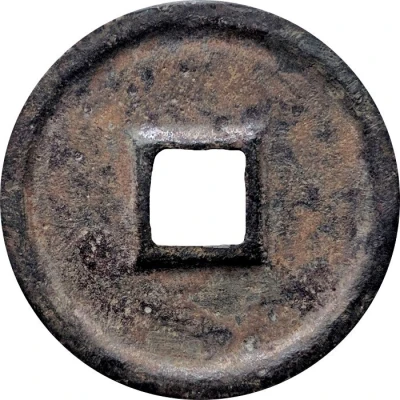

© gros (CC BY-NC-SA)
3 Cash - Zhenghe Tongbao; Seal script; iron ND
| Iron | 11 g | 32 mm |
| Issuer | Empire of China |
|---|---|
| Emperor | Northern Song dynasty › Huizong (宋徽宗) (1100-1125) |
| Type | Standard circulation coin |
| Years | 1111-1118 |
| Value | 3 Cash |
| Currency | Cash (621-1912) |
| Composition | Iron |
| Weight | 11 g |
| Diameter | 32 mm |
| Thickness | 3 mm |
| Shape | Round with a square hole |
| Technique | Cast |
| Orientation | Medal alignment ↑↑ |
| Demonetized | Yes |
| Updated | 2024-10-04 |
| Numista | N#44601 |
|---|---|
| Rarity index | 91% |
Reverse
Blank (uniface).
Edge
Plain
Comment
In 1110, many tin-alloy mints were closed.In 1111, all previous 10 Cash pieces were devalued to 3 Cash. While no bronze 3 Cash pieces were cast, the devalued pieces continued to circulate. Based on the typically larger diameters of these larger iron pieces, some suggest these were cast at 3 Cash.
Interesting fact
The Zhenghe (Tongbao; Seal script; iron) coin was used during the Northern Song dynasty (960-1127 AD) and was one of the first coins to feature a square hole in the center, which was used to thread a string through for easy carrying. This design was later adopted by other countries, including Japan and Korea, and became a standard feature in many Asian coins.

